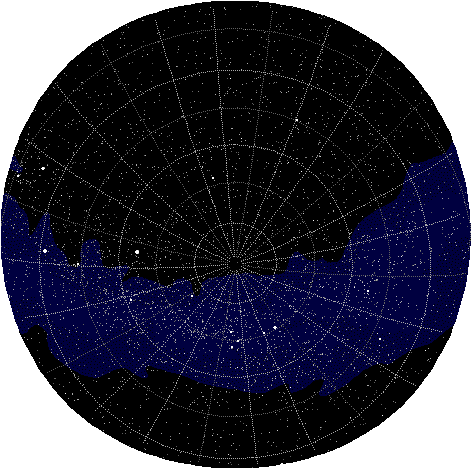Stars But I don't know my way around the heavens? How will I ever find the celestial objects? There are only a handful of the brightest stars routinely used for navigation. I suggest learning how to find and positively identify no more than 16 of these in the hemisphere you live in. Choose the brightest and most prominent and you should have 4 or 5 always visible. As you gain experience you will learn to find more stars. Usually only 4 planets are used for navigation. Mercury seldom obliges so only Venus, Mars, Jupiter and Saturn, which can be seen with the naked eye, are used. If you cannot find and identify the Sun and the Moon may I humbly suggest that you are going to have some difficulties! There are a number of tricks to overcome the lack of star-finding knowledge and a good planisphere is a great help or an astronomical atlas. There are a number of excellent planetarium programs available for the PC. However I find that planetarium programs can sometimes be very misleading as the writers of them are not actually trying to show you the sky as seen with the naked eye. They often attempt to show the relative brightness of stars by size and this is particularly confusing to the beginner. A local observatory will often have a chart of the more prominent stars for its location available on the web. The main trick is to be able to identify 2 or 3 stars with absolute certainty in relation to a constellation - I always use Orion as the belt is so distinctive - and then reference your other stars from those stars by distance and angle. Orion is almost enough in itself because Betelgeuse and Rigel are at either end, Sirius and Procyon off to one side and Aldebaran - the red eye in the bull - off to the other. When Orion is not visible the Scorpion usually is - and by learning the few stars related to it you should be able to manage almost all the navigation stars needed. The following list shows the stars normally used for navigation. Plus Polaris in the northern hemisphere, which is a special case. 58 stars in all. And only a percentage visible at any particular spot on the globe.
A few hours using a star chart and looking at the heavens plus a visit or two to the local planetarium or observatory should provide sufficient familiarity to make identification of enough stars for navigation purposes. I have included two very basic charts of the northern and southern skies to give some idea of the relationships of the stars to each other:
Northern hemisphere Sight Reduction tables can be used in reverse - you work out the LHA for your deduced latitude and by entering the Sight Reduction tables with it the prominent navigation stars can be found - with their calculated heights (Hc) and bearings. By setting the Hc on the sextant before you begin and looking in the direction of the bearing the star should be in the telescope and pretty near the horizon. |